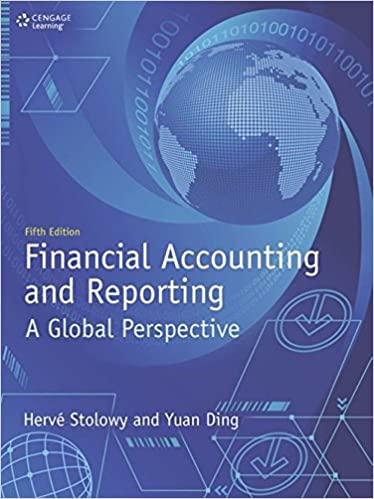|
|
10) The first step in activity-based costing is to | A. identify the cost driver that has a strong correlation to the activity cost pool | | B. assign manufacturing overhead costs for each activity cost pool to product | | C. identify and classify the major activities involved in the manufacture of specific products | | D. compute the activity-based overhead rate per cost driver | | |
11) Which would be an appropriate cost driver for the ordering and receiving activity cost pool? | A. Inspections | | B. Machine setups | | C. Machine hours | | D. Purchase orders | | |
12) Which of the following is NOT typical of traditional costing systems? | A. Use of multiple cost drivers to allocate overhead | | B. Use of a single predetermined overhead rate | | C. Assumption of correlation between direct labor and incurrence of overhead cost | | D. Use of direct labor hours or direct labor cost to assign overhead | | |
13) What sometimes makes implementation of activity-based costing difficult in service industries is | A. attempting to reduce or eliminate nonvalue-added activities | | B. the labeling of activities as value-added | | C. that a larger proportion of overhead costs are company-wide costs | | D. identifying activities, activity cost plus, and cost drivers | | |
14) Which of the following is a value-added activity? | A. Inspections | | B. Engineering design | | C. Inventory storage | | D. Machinery repair | | |
15) Each of the following is a limitation of activity-based costing EXCEPT | A. Some arbitrary allocations continue. | | B. It can be expensive to use. | | C. More cost pools are used. | | D. It is more complex than traditional costing. | | |
16) Poodle Company manufactures two products, Mini A and Maxi B. Poodle's overhead costs consist of setting up machines, $800,000; machining, $1,800,000; and inspecting, $600,000. Information on the two products is: | | Mini A | Maxi B | | Direct labor hours | 15,000 | 25,000 | | Machine setups | 600 | 400 | | Machine hours | 24,000 | 26,000 | | Inspections | 800 | 700 | | | Overhead applied to Mini A using traditional costing using direct labor hours is | A. $1,920,000 | | B. $1,200,000 | | C. $1,670,000 | | D. $1,536,000 | | |
17) One of Astro Company's activity cost pools is machine setups, with estimated overhead of $150,000. Astro produces sparklers (400 setups) and lighters (600 setups). How much of the machine setup cost pool should be assigned to sparklers? | A. $60,000 | | B. $90,000 | | C. $150,000 | | D. $75,000 | | |
18) Poodle Company manufactures two products, Mini A and Maxi B. Poodle's overhead costs consist of setting up machines, $800,000; machining, $1,800,000; and inspecting, $600,000. Information on the two products is: | | Mini A | Maxi B | | Direct labor hours | 15,000 | 25,000 | | Machine setups | 600 | 400 | | Machine hours | 24,000 | 26,000 | | Inspections | 800 | 700 | | | Overhead applied to Mini A using activity-based costing is | A. $1,536,000 | | B. $1,920,000 | | C. $1,200,000 | | D. $1,664,000 19) Seran Company has contacted Truckel Inc. with an offer to sell it 5,000 of the wickets for $18 each. If Truckel makes the wickets, variable costs are $11 per unit. Fixed costs are $12 per unit; however, $5 per unit is avoidable. Should Truckel make or buy the wickets? | A. Buy; savings = $10,000 | | B. Make; savings = $10,000 | | C. Buy; savings = $25,000 | | D. Make; savings = $20,000 | | | 20) Rosen, Inc. has 10,000 obsolete calculators, which are carried in inventory at a cost of $20,000. If the calculators are scrapped, they can be sold for $1.10 each (for parts). If they are repackaged, at a cost of $15,000, they could be sold to toy stores for $2.50 per unit. What alternative should be chosen, and why? | A. Repackage; revenue is $5,000 greater than cost. | | B. Repackage; receive profit of $10,000. | | C. Scrap; profit is $1,000 greater. | | D. Scrap; incremental loss is $9,000. | | | 21) Walton, Inc. is unsure of whether to sell its product assembled or unassembled. The unit cost of the unassembled product is $16, while the cost of assembling each unit is estimated at $17. Unassembled units can be sold for $55, while assembled units could be sold for $71 per unit. What decision should Walton make? | A. Sell before assembly; the company will save $15 per unit. | | B. Process further; the company will save $16 per unit. | | C. Sell before assembly; the company will save $1 per unit. | | D. Process further; the company will save $1 per unit. | | | | 22) Hartley, Inc. has one product with a selling price per unit of $200, the unit variable cost is $75, and the total monthly fixed costs are $300,000. How much is Hartley | | |






